3 de December de 2022
How Much Weight Should I Lift to Reach My Full Potential?
First, you should know what the weight of your maximum rep (1RM) is.
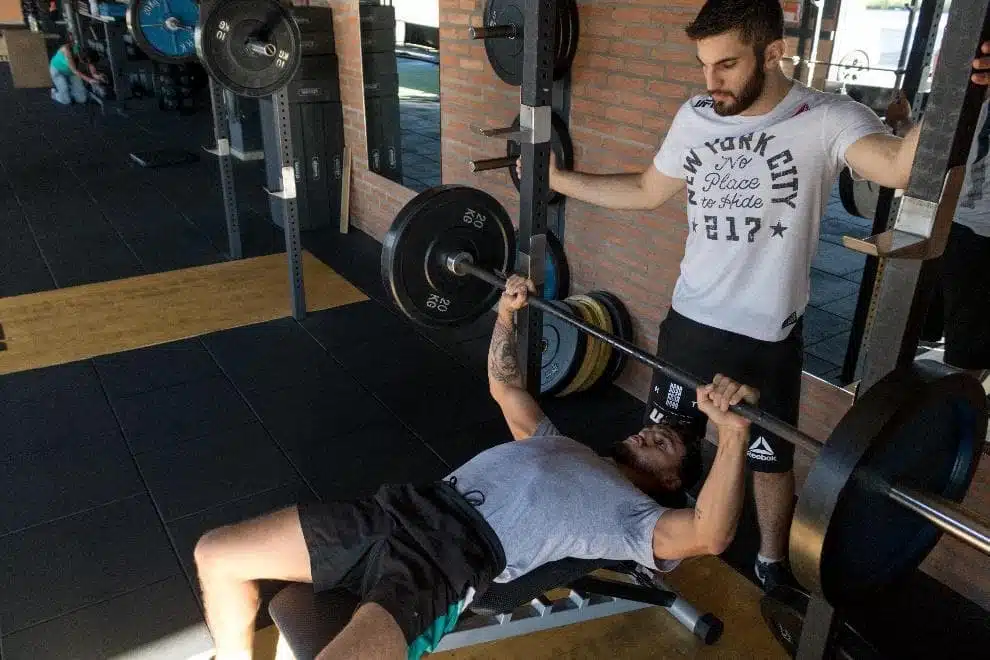
To know the weight we have to lift we have to know how close or far it is from our weight of a maximum repetition (1RM). The weight of a maximum repetition is the load we can lift only once and corresponds to 100% of our load capacity (Grgic, Lazinica, Schoenfeld, & Pedisic, 2020). If we are able to lift 100 kg in squat, but only once, our 1RM in this exercise will be 100kg. From there, we can calculate 90% of 1RM, 80% of 1RM…
The 1RM is usually calculated with a series of formulas in which the weight we have lifted and the repetitions we have performed are introduced (Grgic et al., 2020). It can also be calculated directly by making a weight ladder until that maximum weight is found, but it carries a great risk and could not be carried out often. The speed measurement devices allow to calculate the 1RM each day in the warm-up, since according to the speed at which we move a load, we can know quite precisely what the 1RM of that day is.
This implies two advantages: the first is that we do not need to move our maximum load or a weight very close to it, which decreases the risk of injury; the second is that it allows us to control our 1RM every day, since it varies according to whether we have slept, the load we have been doing and many other variables (Liao et al., 2021). Once we know what our 1RM is, we can program a percentage of it.
1RM load ranges
We have just seen that the weight lifted is set based on the weight of 1RM. Clarified the bases of said 1RM, how much weight should I lift? Rather, what percentage of 1RM should I use to gain muscle mass and strength? It is not possible to give a specific weight, but we will talk about very low, low, moderate or high loads referring to the load ranges that the scientific literature usually uses to carry out its research (Carvalho et al., 2022). Each of these ranges is associated with a percentage of 1RM and the estimated number of repetitions that can be performed with that weight.
- Very low load (less than 30% of 1RM or more than 35RM).
- Low load (30% – 59% of 1RM, or 16-35 RM).
- Moderate load (60%-79% of 1RM, 8-15RM).
- High load (equal to or more than 80% of 1RM, or equal to or less than 7RM).
Lifting high loads has commonly been linked to strength gains (strength zone), moderate loads to muscle mass gains (hypertrophy zone) and low loads to strength endurance adaptations (muscular endurance zone). However, this implies a reductionism since other loads outside these work zones are also necessary to maximize each of them (Schoenfeld, Grgic, Van Every, & Plotkin, 2021).

These areas of strength, hypertrophy or muscular endurance lead to confusion because, although they are partly right as we will see below, it is interesting to work in the different load ranges to reach the maximum potential of strength, muscle mass and muscular endurance.
How much weight should I lift to reach maximum muscle strength potential?
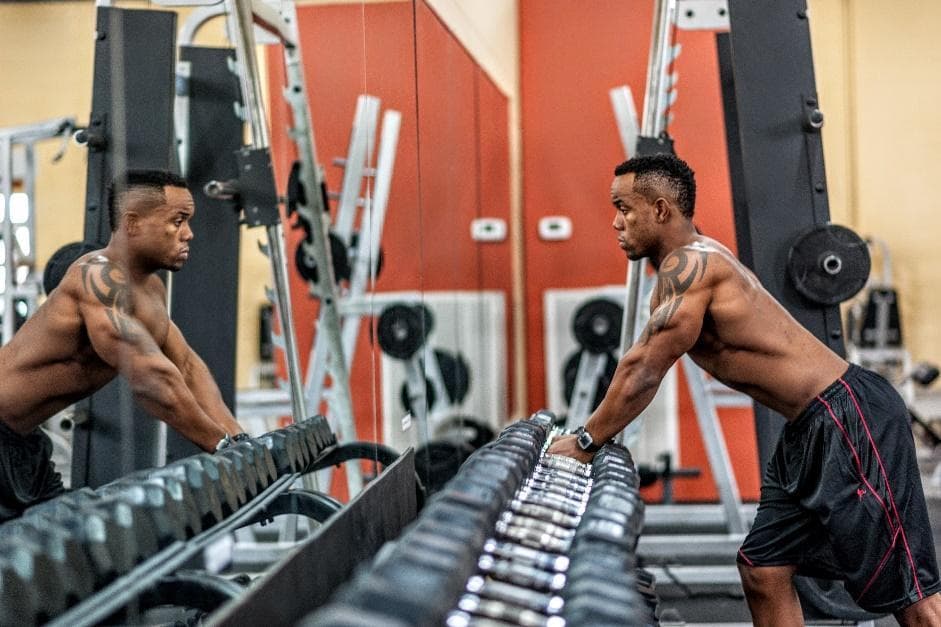
Before knowing how much weight you should lift to reach the maximum muscle strength potential, we must stop at the most important concept of this article: maximum strength benefits are obtained with high loads (Carvalho et al., 2022; Schoenfeld, Grgic, Ogborn, & Krieger, 2017). While high-load training is a requirement to maximize our 1RM, significant strength gains have also been observed with the use of moderate and low loads in beginning athletes (Ogasawara et al., 2013).
The fact that beginners in strength can obtain similar gains with low and high loads allows us to gain time to improve the technique and get used to the tissues with low and moderate loads, without the need to use high loads (Dinyer et al., 2019). Older adults who have never trained strength will also improve their strength with low loads, which will increase their quality of life and avoid risks such as falls (Balachandran et al., 2022).
Strength improvements have also been seen in athletes advanced in strength when training with moderate and low loads, but to a lesser extent than if they lift high loads (Schoenfeld, Peterson, Ogborn, Contreras, & Sonmez, 2015). These differences between beginners and advanced lead us to think that as we specialize in strength we will have to focus more on the range of high loads (Young, 2006).
Intermediate and advanced athletes in strength
If our goal is muscle strength and we are intermediate or advanced athletes we will give more volume of work to high loads (≥ 80% of 1RM), since it is essential to work in that “strength zone”. That does not mean that we will focus solely and exclusively on a training area, but that we will dedicate more series than to the other zones. Eric Helms proposes to apply an amount of total volume to each range (high, medium and low), discarding the very low range (less than 30% of 1RM) as it is not so interesting (Helms, Morgan, & Valdez, 2020).
- Range of high loads (≥ 80% of 1RM): between two thirds and three quarters or between 66% – 75% of the total volume will be dedicated to lifting high loads.
- Moderate load range(60%-79% of 1RM): between a third and a quarter or between 25% and 33% of the total volume will be dedicated to lifting moderate loads.
- Low load range(30% – 59% of 1RM): the remaining volume of the total will be dedicated to lifting low loads, between a third and a quarter or between 25% and 33% of the total volume.
Beginner strength athletes
If our goal is muscle strength and we are beginner athletes, we will first have to use low and moderate loads and after a time of adaptation begin to move high loads. In addition, as we will see below, moderate loads are the most attractive and those that generate the greatest adhesion, so for beginners it will be the best choice (Schoenfeld et al., 2021).
How much weight should I lift to reach the maximum potential for muscle hypertrophy?
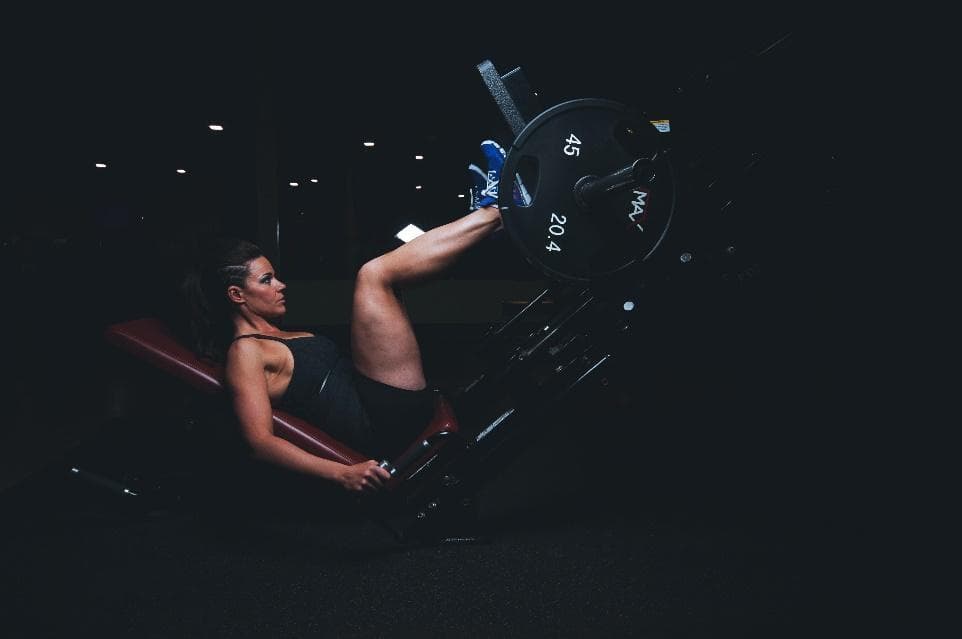
While lifting loads of 80% of 1RM or more is vital to maximize muscle strength gains in intermediate or advanced athletes, the increase in muscle mass is similar regardless of the magnitude of the load (Carvalho et al., 2022; Schoenfeld et al., 2017, 2021). Even with low loads we can obtain muscle mass gains similar to when we use moderate and high loads (Mitchell et al., 2012). Of course, if we use low loads we have to go to muscle failure or stay close, because if we do not the gains will be much lower (Terada, Kikuchi, Burt, Voisin, & Nakazato, 2022).
The important thing to achieve greater muscle hypertrophy is not the weight lifted, what is really important will be the volume we give to each muscle group. There are differences when it comes to achieving greater muscle hypertrophy if we add more training volume, since there is a dose-response relationship with this variable (Baz-Valle, Balsalobre-Fernández, Alix-Fages, & Santos-Concejero, 2022; Schoenfeld et al., 2019). That tells us that the main variable of training to gain strength is intensity, while the main variable to gain muscle mass is volume.
Training with high loads involves psychological stress to face them, while low loads can cause training to be described as more “unpleasant” and rated with a higher score on the scales of perceived effort (RPE) (Ribeiro, Dos Santos, Nunes, & Schoenfeld, 2019). Therefore, moderate weight range may be the most enjoyable to train and the one that creates the most adherence in the long term (Schoenfeld et al., 2021).
These recommendations from the scientific literature coincide with what Eric Helms proposes when distributing the total volume of each muscle group (Helms et al., 2020). These are simply general recommendations, which we can adapt to our personal preferences, prominently using the “hypertrophy zone” with a moderate weight range (60%-79% of 1RM). With low loads you can also achieve muscle mass gains, but we must train close to muscle failure for these adaptations to occur.
- High weight range (≥ 80% of 1RM): between a third and a quarter or between 25% and 33% of the total volume will be dedicated to lifting high loads.
- Moderate weight range (60%-79% of 1RM): between two thirds and three quarters or between 66% – 75% of the total volume will be dedicated to lifting moderate loads.
- Low weight range (30% – 59% of 1RM): the remaining volume of the total will be dedicated to lifting low loads, between a third and a quarter or between 25% and 33% of the total volume.
How much weight should I lift to reach maximum muscle endurance potential?
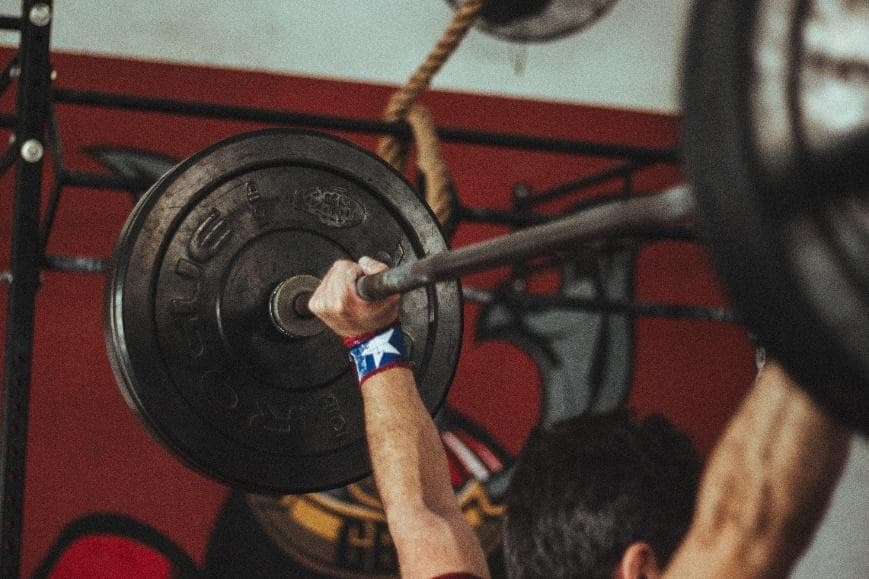
Just as for some authors there was a “strength zone” and a “hypertrophy zone”, the “muscular resistance zone” could not be missing. Simplifying the definition a lot, training with low loads was considered ideal for all tasks that required applying force many times, such as each of the strides of the race. Many still call this quality “strength-endurance”, although it is preferable to call it strength resistance, or simply muscular endurance.
Low loads to or without muscle failure are effective in producing improvements in muscle endurance with low loads (Fliss, Stevenson, Mardan-Dezfouli, Li, & Mitchell, 2022). Therefore, that “strength resistance zone” might make sense, what happens is that low loads increase muscular endurance at that percentage of load, but not with higher loads. That means that if we train a bench press at 40% of 1RM we will improve the resistance to force at that weight, but we will not see that improvement when we try to lift a load of 80% of 1RM. That’s what the principle of specificity is all about: training with low loads improves muscle endurance in that load range, but they seem inadequate to increase absolute muscular endurance with heavy loads (Schoenfeld et al., 2021).
What does this principle of specificity mean to us? If we present ourselves to the physical tests of an opposition that demands to perform pull-ups with body weight or bench press with a certain load, we will work the muscular resistance with that load to specialize in it, although like strength and hypertrophy, we will also use the other ranges of loads to maximize the potential.
However, if we are cyclists, rowers or any sport that involves repeating a movement, we must work strength and power with higher loads, since it will be more interesting than training with low loads (Fliss et al., 2022). The application of power in each pedal stroke or paddle makes more sense than performing infinite repetitions with low loads, which is what the defenders of the “muscular resistance zone” exposed. You just have to watch some training from an elite long-distance runner and see the loads he moves and the speed with which he does it.
Conclusions
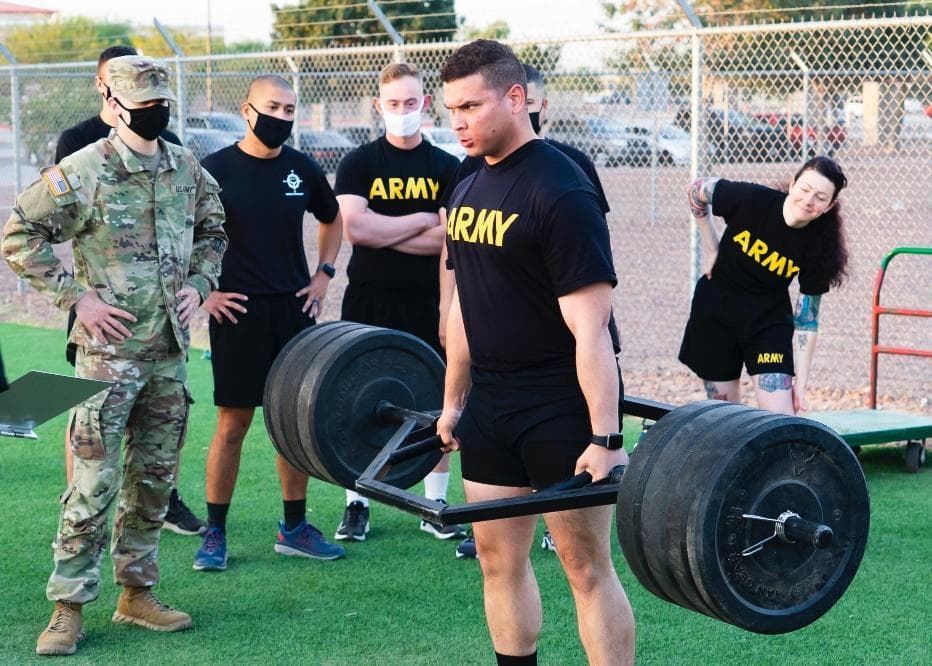
At this point we will be a bit like Socrates: “I only know that I know nothing.” If we want to reach our full potential in the different manifestations of force, there is no exact weight to lift. Yes, we have ranges of loads that will be more or less adequate according to our level and our objective. Athletes who already have a strength base will gain more strength with the use of high loads (≥ 80% of 1RM). However, beginner athletes can gain significant strength gains with low (30% – 59% of 1RM), moderate (60%-79% of 1RM) or high (≥ 80% of 1RM) loads.
For hypertrophy training, a minimum intensity is not necessary, whatever our level, as long as the load is not very low (< 30% of 1RM). Loads between 30% and 100% of 1RM will serve to produce an increase in muscle mass, but moderate loads (60%-79% of 1RM) may be the best option for muscle hypertrophy, whatever our level.
Strength, muscle hypertrophy and muscular endurance are connected to each other. Higher levels of absolute strength will allow us to give more stimulation to the muscle when training heavier, which will affect muscle hypertrophy and improve our economy in sports gestures, which will allow us to tire less. Muscle mass is one of the factors that can helpus apply more strength. Training to gain that muscle mass is generated by doing a lot of volume, which also generates that muscular endurance. Therefore, everything is interconnected, and although there are some specific recommendations to know how much weight you should lift for each of them, the ideal is to work with high, moderate and low loads.
Joaquin Vico Plaza
References
Balachandran, A. T., Steele, J., Angielczyk, D., Belio, M., Schoenfeld, B. J., Quiles, N., … Abou-Setta, A. M. (2022). Comparison of Power Training vs Traditional Strength Training on Physical Function in Older Adults: A Systematic Review and Meta-analysis. JAMA Network Open, 5(5). https://doi.org/10.1001/JAMANETWORKOPEN.2022.11623
Baz-Valle, E., Balsalobre-Fernández, C., Alix-Fages, C., & Santos-Concejero, J. (2022). A Systematic Review of The Effects of Different Resistance Training Volumes on Muscle Hypertrophy. Journal of Human Kinetics, 81(1), 199–210. https://doi.org/10.2478/HUKIN-2022-0017
Carvalho, L., Junior, R. M., Barreira, J., Schoenfeld, B. J., Orazem, J., & Barroso, R. (2022). Muscle hypertrophy and strength gains after resistance training with different volume-matched loads: a systematic review and meta-analysis. Applied Physiology, Nutrition, and Metabolism = Physiologie Appliquee, Nutrition et Metabolisme, 47(4), 357–368. https://doi.org/10.1139/APNM-2021-0515
Dinyer, T. K., Byrd, M. T., Garver, M. J., Rickard, A. J., Miller, W. M., Burns, S., … Bergstrom, H. C. (2019). Low-Load vs. High-Load Resistance Training to Failure on One Repetition Maximum Strength and Body Composition in Untrained Women. Journal of Strength and Conditioning Research, 33(7), 1737–1744. https://doi.org/10.1519/JSC.0000000000003194
Fliss, M. D., Stevenson, J., Mardan-Dezfouli, S., Li, D. C. W., & Mitchell, C. J. (2022). Higher- and lower-load resistance exercise training induce load-specific local muscle endurance changes in young women: a randomised trial. Applied Physiology, Nutrition, and Metabolism = Physiologie Appliquee, Nutrition et Metabolisme. https://doi.org/10.1139/APNM-2022-0263
Grgic, J., Lazinica, B., Schoenfeld, B. J., & Pedisic, Z. (2020). Test-Retest Reliability of the One-Repetition Maximum (1RM) Strength Assessment: a Systematic Review. Sports Medicine – Open, 6(1). https://doi.org/10.1186/S40798-020-00260-Z
Helms, E., Morgan, A., & Valdez, A. (2020). The pyramids of nutrition and training.
Liao, K. F., Wang, X. X., Han, M. Y., Li, L. L., Nassis, G. P., & Li, Y. M. (2021). Effects of velocity based training vs. traditional 1RM percentage-based training on improving strength, jump, linear sprint and change of direction speed performance: A Systematic review with meta-analysis. PloS One, 16(11). https://doi.org/10.1371/JOURNAL.PONE.0259790
Mitchell, C. J., Churchward-Venne, T. A., West, D. W. D., Burd, N. A., Breen, L., Baker, S. K., & Phillips, S. M. (2012). Resistance exercise load does not determine training-mediated hypertrophic gains in young men. Journal of Applied Physiology, 113(1), 71–77. https://doi.org/10.1152/JAPPLPHYSIOL.00307.2012/ASSET/IMAGES/LARGE/ZDG0131201610004.JPEG
Ogasawara, R., Loenneke, J. P., Thiebaud, R. S., Abe, T., Ogasawara, R., Loenneke, J. P., … Abe, T. (2013). Low-Load Bench Press Training to Fatigue Results in Muscle Hypertrophy Similar to High-Load Bench Press Training. International Journal of Clinical Medicine, 4(2), 114–121. https://doi.org/10.4236/IJCM.2013.42022
Ribeiro, A. S., Dos Santos, E. D., Nunes, J. P., & Schoenfeld, B. J. (2019). Acute Effects of Different Training Loads on Affective Responses in Resistance-trained Men. International Journal of Sports Medicine, 40(13), 850–855. https://doi.org/10.1055/A-0997-6680
Schoenfeld, B. J., Contreras, B., Krieger, J., Grgic, J., Delcastillo, K., Belliard, R., & Alto, A. (2019). Resistance Training Volume Enhances Muscle Hypertrophy but Not Strength in Trained Men. Medicine and Science in Sports and Exercise, 51(1), 94–103. https://doi.org/10.1249/MSS.0000000000001764
Schoenfeld, B. J., Grgic, J., Ogborn, D., & Krieger, J. W. (2017). Strength and hypertrophy adaptations between low- vs. High-load resistance training: A systematic review and meta-analysis. Journal of Strength and Conditioning Research, 31(12), 3508–3523. https://doi.org/10.1519/JSC.0000000000002200
Schoenfeld, B. J., Grgic, J., Van Every, D. W., & Plotkin, D. L. (2021). Loading Recommendations for Muscle Strength, Hypertrophy, and Local Endurance: A Re-Examination of the Repetition Continuum. Sports 2021, Vol. 9, Page 32, 9(2), 32. https://doi.org/10.3390/SPORTS9020032
Schoenfeld, B. J., Peterson, M. D., Ogborn, D., Contreras, B., & Sonmez, G. T. (2015). Effects of Low- vs. High-Load Resistance Training on Muscle Strength and Hypertrophy in Well-Trained Men. Journal of Strength and Conditioning Research, 29(10), 2954–2963. https://doi.org/10.1519/JSC.0000000000000958
Terada, K., Kikuchi, N., Burt, D., Voisin, S., & Nakazato, K. (2022). Low-Load Resistance Training to Volitional Failure Induces Muscle Hypertrophy Similar to Volume-Matched, Velocity Fatigue. Journal of Strength and Conditioning Research, 36(6), 1576–1581. https://doi.org/10.1519/JSC.0000000000003690
Young, W. B. (2006). Transfer of strength and power training to sports performance. International Journal of Sports Physiology and Performance, 1(2), 74–83. https://doi.org/10.1123/IJSPP.1.2.74

